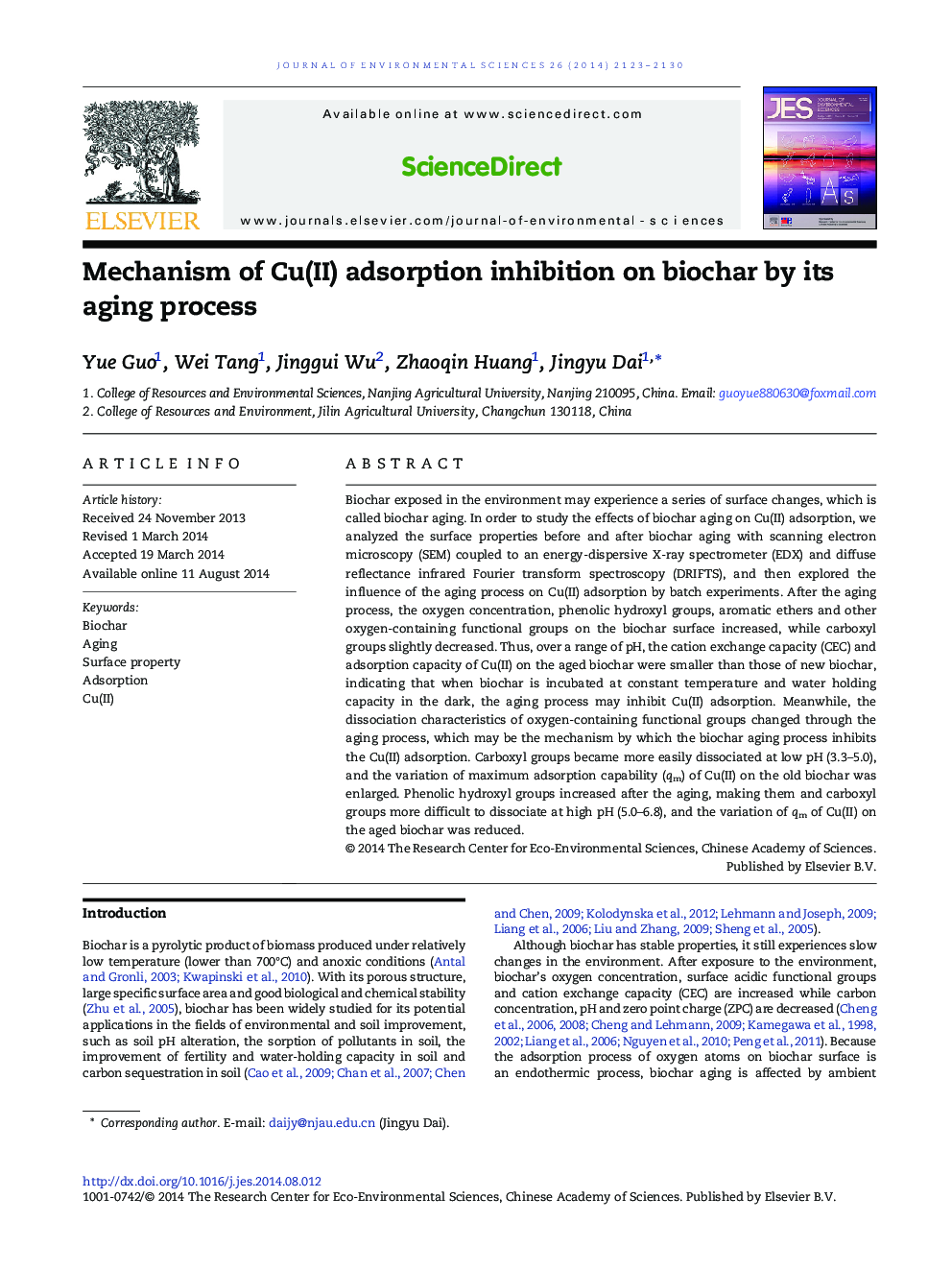| Article ID | Journal | Published Year | Pages | File Type |
|---|---|---|---|---|
| 4454406 | Journal of Environmental Sciences | 2014 | 8 Pages |
Biochar exposed in the environment may experience a series of surface changes, which is called biochar aging. In order to study the effects of biochar aging on Cu(II) adsorption, we analyzed the surface properties before and after biochar aging with scanning electron microscopy (SEM) coupled to an energy-dispersive X-ray spectrometer (EDX) and diffuse reflectance infrared Fourier transform spectroscopy (DRIFTS), and then explored the influence of the aging process on Cu(II) adsorption by batch experiments. After the aging process, the oxygen concentration, phenolic hydroxyl groups, aromatic ethers and other oxygen-containing functional groups on the biochar surface increased, while carboxyl groups slightly decreased. Thus, over a range of pH, the cation exchange capacity (CEC) and adsorption capacity of Cu(II) on the aged biochar were smaller than those of new biochar, indicating that when biochar is incubated at constant temperature and water holding capacity in the dark, the aging process may inhibit Cu(II) adsorption. Meanwhile, the dissociation characteristics of oxygen-containing functional groups changed through the aging process, which may be the mechanism by which the biochar aging process inhibits the Cu(II) adsorption. Carboxyl groups became more easily dissociated at low pH (3.3–5.0), and the variation of maximum adsorption capability (qm) of Cu(II) on the old biochar was enlarged. Phenolic hydroxyl groups increased after the aging, making them and carboxyl groups more difficult to dissociate at high pH (5.0–6.8), and the variation of qm of Cu(II) on the aged biochar was reduced.
